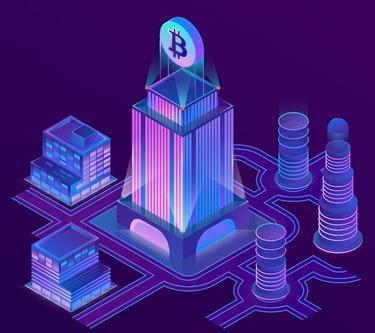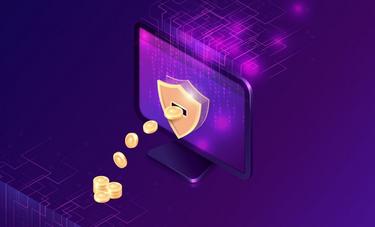Utility token
A utility token[1] is a type of cryptocurrency[2] token that is issued to fund the development of the cryptocurrency and that can be later used to purchase a good or service offered by the issuer of the cryptocurrency. Unlike security tokens[3], which represent an investment into a company and come with the expectation of a return, utility tokens provide users with access to a future product or service.
- Characteristics of Utility Tokens
- Regulatory Considerations
- Examples of Utility Tokens
- Challenges and Opportunities
- Utility token
- What Are Utility Tokens?
- Characteristics and Functionality
- Benefits of Utility Tokens
- Regulatory Considerations
- Use Cases and Applications
- Challenges and Criticisms
- The Future of Utility Tokens
Characteristics of Utility Tokens
Utility tokens are designed with specific functionalities within their native ecosystems:
- Access: Grant holders the right to access a digital platform or use a service.
- Functionality: Enhance user experience or provide utility through specific features or services.
- Non-Investment: Primarily not intended as investments or to represent ownership in a project.
Regulatory Considerations
The classification of utility tokens varies by jurisdiction, affecting how they are regulated and taxed. Authorities differentiate utility tokens from security tokens based on their use case and the expectation of profit by the holder.
Examples of Utility Tokens
Popular utility tokens include:
- Basic Attention Token (BAT): Used within the Brave browser to reward users for viewing advertisements.
- Filecoin: Powers a decentralized file storage network, allowing users to buy and sell storage without a central coordinator.
Challenges and Opportunities
While utility tokens present innovative opportunities for crowdfunding[4] and decentralized applications, they also face challenges such as regulatory scrutiny[5], market volatility[6], and ensuring long-term value to users.
Utility token
Utility tokens represent a significant innovation in the digital economy, offering a new way for companies to fund projects and for users to access services within a particular ecosystem. Unlike traditional financial instruments, utility tokens are not designed as investments; instead, they provide users with future access to a product or service. These tokens are a cornerstone of many blockchain[7] projects, enabling decentralized applications (dApps) and platforms to create an internal economy. Understanding utility tokens is crucial for navigating the modern landscape of digital currencies[8] and blockchain technology.
What Are Utility Tokens?
Utility tokens are digital tokens that grant holders access to the services or products offered by a project or platform. Unlike security tokens, which represent ownership in an asset and entitle the holder to dividends or profits, utility tokens are used to facilitate transactions within a blockchain ecosystem. They can be thought of as “coupons” for future services or resources offered by the issuing company.
Characteristics and Functionality
Utility tokens are characterized by their use case within a specific ecosystem. They might allow users to vote on decisions affecting the platform, pay for transactions, or access certain functionalities. This direct utility distinguishes them from cryptocurrencies[9] like Bitcoin[10], which are often seen primarily as stores of value or mediums of exchange[11], and from security tokens, which are digital forms of traditional financial assets.
Benefits of Utility Tokens
Utility tokens offer several benefits, including incentivizing user participation in a blockchain ecosystem and providing a funding mechanism for project development. They enable decentralized business models, reducing the need for intermediaries and allowing users direct access to services. Additionally, utility tokens can foster a sense of community and loyalty among users and stakeholders of a platform.
Regulatory Considerations
The regulatory landscape[12] for utility tokens is complex and varies by jurisdiction. Regulators worldwide are scrutinizing how these tokens are issued, sold, and traded to ensure they do not fall under securities laws[13] unless appropriately registered. Compliance[14] with these regulations is crucial for projects issuing utility tokens to avoid legal and financial penalties.
Use Cases and Applications
Utility tokens have a wide range of applications, from accessing decentralized storage networks to participating in governance protocols or buying virtual goods in digital platforms. They are integral to the functionality of many decentralized finance (DeFi) projects, gaming platforms, and other blockchain-based services.
Challenges and Criticisms
Despite their potential, utility tokens face challenges, including volatility[15], limited acceptance outside their issuing ecosystem, and the risk of projects not delivering on their promises. The speculative trading of utility tokens can also detract from their intended purpose, complicating their regulatory status and utility within their ecosystems.
The Future of Utility Tokens
As blockchain technology evolves and matures, the role of utility tokens is likely to expand. Innovations in token design, governance, and regulatory compliance[16] could address current challenges, paving the way for more widespread adoption and integration of utility tokens into the digital economy.
Utility tokens represent a novel and evolving aspect of blockchain technology, with the potential to redefine how we access and pay for digital services. As the market matures and regulatory clarity[17] improves, utility tokens could play a pivotal role in the growth of decentralized applications and the broader digital economy.
- Token — A unit of value issued by a project, representing various assets or utilities on a blockchain.
- Cryptocurrency — Digital or virtual currency secured by cryptography, facilitates secure, anonymous transactions.
- Security Tokens — Digital tokens that represent ownership or an interest in real-world assets, subject to regulatory compliance.
- Crowdfunding — The practice of funding a project or venture by raising small amounts of money from a large number of people, typically via the Internet.
- Regulatory Scrutiny — The examination and oversight by regulatory bodies to ensure compliance with laws and regulations, especially in financial markets.
- Market Volatility — The rate at which the price of a cryptocurrency increases or decreases for a given set of returns.
- Blockchain — A decentralized digital ledger recording cryptocurrency transactions across multiple computers.
- Digital currencies — Digital forms of money that exist only in electronic form, not in physical form like coins or notes.
- Cryptocurrencies — Digital or virtual currencies that use cryptography for security and operate on a decentralized system, unlike traditional currencies.
- Bitcoin — The first and most well-known cryptocurrency, was introduced in 2009 by Satoshi Nakamoto, who developed Bitcoin.
- Exchange — A platform where individuals can buy, sell, or trade cryptocurrencies for other digital currency or traditional currency.
- Regulatory Landscape — The set of laws, guidelines, and policies that govern the use of virtual assets across different regions.
- Securities Laws — Laws regulating the offer and sale of securities to protect investors against fraud, requiring transparency and disclosure.
- Compliance — The act of adhering to legal standards and regulations established by governmental bodies and regulatory agencies, particularly in the context of financial operations and transactions involving cryptocurrencies.
- Volatility — Rapid and significant price movement, a common characteristic of cryptocurrencies.
- Regulatory Compliance — Adherence to laws, regulations, guidelines, and specifications relevant to business processes.
- Regulatory Clarity — The evolution of legal frameworks to better accommodate and govern blockchain technology, which is expected to encourage wider adoption and innovation across various sectors.
- ConsenSys. 'An Introduction to Ethereum and Smart Contracts: a Programmable Blockchain', 2017.
- Tapscott, Don, and Alex Tapscott. 'Blockchain Revolution: How the Technology Behind Bitcoin Is Changing Money, Business, and the World', Portfolio, 2016.



